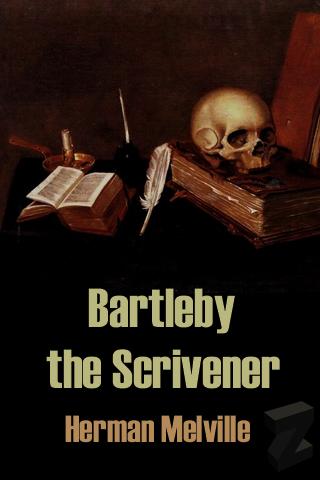Not much. But how much scrivener work will computers replace? Almost all.
 It turns out we’re doing more and more shadow work as time goes on: we scan our own groceries, we locate books at Barnes & Nobel by punching them into a computer, we pump our own gas, we do much of our own personal banking and investing without ever talking to a human, we do our own check-in at the airport. Routine services all around us are being replaced by technology. Maybe it’s a generational thing, but I feel more comfortable interacting directly with the system than having a person intermediate. And I’d rather just log into a web page to handle my business directly than wait on hold trying to connect to a customer representative – I get frustrated if I need to call someone to resolve an issue and usually find it faster to figure it out myself.
It turns out we’re doing more and more shadow work as time goes on: we scan our own groceries, we locate books at Barnes & Nobel by punching them into a computer, we pump our own gas, we do much of our own personal banking and investing without ever talking to a human, we do our own check-in at the airport. Routine services all around us are being replaced by technology. Maybe it’s a generational thing, but I feel more comfortable interacting directly with the system than having a person intermediate. And I’d rather just log into a web page to handle my business directly than wait on hold trying to connect to a customer representative – I get frustrated if I need to call someone to resolve an issue and usually find it faster to figure it out myself.
It was the same way for me practicing law. I rarely utilized my assistant – most of the time I did my own time sheets, filed my own expense reports, edited my own documents and booked my own conference rooms. Our system had made these tasks so simple that it was actually faster for me to handle these things myself than to outsource them. These administrative tasks historically were performed by people but have largely been replaced by computers.
Technology will continue to move higher up the value chain, making workers more and more productive (whether or not you feel this is a good thing – and it’s certainly debatable – the trend isn’t reversing itself anytime soon).
In the law, the next frontier is what I call the scrivener work – locating, categorizing and comparing language (both case law and contractual text). This is largely hunt-and-seek work: finding precedents, summarizing contracts and comparing language. Because the technology to handle this hasn’t previously existed, up to now it has been done largely by lawyers themselves. But it has started to take an oppressive amount of time to handle – it’s a problem both for lawyers who get bogged down by scrivener work and for clients who pay high-value workers to handle lower-value tasks.
Scrivener work is distinct from legal work. Legal work is what you went to law school to learn – advising clients on risks, opining on the legality of a proposed action, distilling experience and precedent into actionable recommendations and of course drafting and negotiating documents. But the legal work is increasingly crowded out by the scrivener work.
This phenomenon has already played out in discovery – in any sizable case, it is no longer remotely realistic to have high-priced attorneys manually reviewing each document. Discovery materials are now segmented into different categories for different levels of review: (i) the critical information, which must be reviewed by experienced attorneys, (ii) relevant but not crucial information, which can be reviewed and summarized by more inexperienced attorneys and (iii) everything else. eDiscovery software makes this segmentation possible.
Similarly, the scrivener work in corporate practice will soon be replaced by computers. It will be much easier to find precedents, assemble standard agreements and pinpoint missing or unacceptable provisions in a set of complex documents. Lawyers should view this as a good thing – it allows them to focus on the higher-value tasks (which also happen to be more professionally fulfilling) and provide their services more efficiently.
So the real question is what the adoption curve will look like. Law firms are notorious for still using Windows XP and Office 2003. But ultimately client demands drive adoption – not only in the form of alternative fee arrangements and push-back on billable rates, but also in terms of business development: the firms that can best demonstrate technological efficiency to their clients will gain marketshare. And firms will face increasing pressure from legal outsourcing, both from South Asia and low-cost jurisdictions in the US. The adoption of this technology will mirror that of eDiscovery – the pain becomes so acute, it forms a completely new category of technology (and its own neologism) in just a few years.
For younger attorneys, this is a big opportunity. Being able to understand and leverage technology is becoming a real way of differentiating yourself in an increasingly competitive job market. When I started at my firm, nobody asked me whether I knew how to use Windows, Microsoft Word and Westlaw – it was assumed. In my day, attorneys who were adept with Excel and PowerPoint were ahead of the curve. In the future, using next generation tools to perform more efficiently and produce higher quality work will be a big advantage. For those attorneys that embrace these technologies, it will also make practicing law more fun.

Comments are closed.